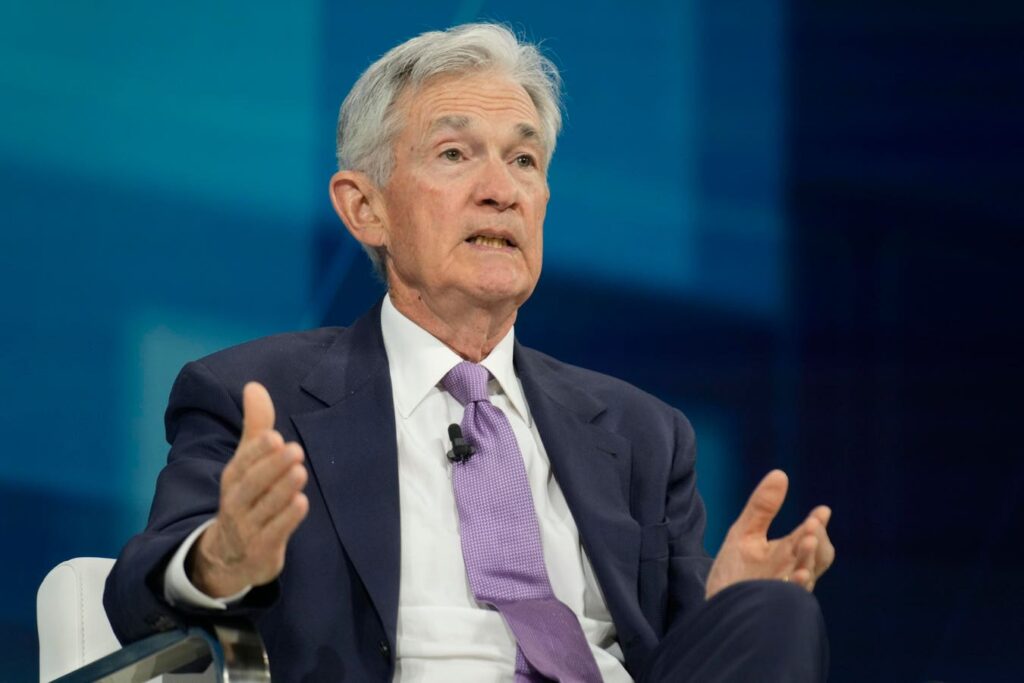Federal Reserve Chair Jerome Powell recently addressed the economic outlook at the DealBook Summit in New York, noting a sustained trend of interest rate cuts which began in September 2024. Fixed income markets, using the CME FedWatch Tool, predict that the Federal Open Market Committee (FOMC) will implement possibly two additional rate cuts throughout 2025. While inflation has shown signs of cooling, it still remains above the FOMC’s target of 2%, hovering around 3%. Recent labor market data suggests a resilient economy, with unemployment inching upwards but not indicative of a significant downturn. Additionally, rental costs serve as a crucial variable; should housing costs decline, inflation may drop more significantly, potentially allowing for more aggressive interest rate adjustments.
The anticipation of a rate cut in December is considered highly likely, with the decision expected following the FOMC’s meeting on December 18, marking their last action for 2024. Financial markets are poised to react, predicting a shorter path of rate reductions in 2025 than initially projected. Moreover, while earlier forecasts indicated potential rate drops down to 3% by late 2025, recent estimates suggest rates will likely hover closer to 4%. The FOMC’s projections from September indicated a short-term interest rate of about 3.4% by the end of 2025, although these figures are due for an update during the upcoming December meeting.
In recent months, employment data has surprised many analysts with its strength. The unemployment rate for November was reported at 4.2%, an increase from 3.5% a year earlier, yet still signaling a relatively stable job market. Nonfarm payrolls rose significantly, adding 227,000 jobs, reflecting a workforce resilient despite the uptick in unemployment. Meanwhile, the third quarter of 2024 saw an annualized economic growth rate of 2.8%, supporting the notion of an economy that, while facing challenges, remains on a positive trajectory.
Despite easing from earlier peaks, inflation metrics are still concerning for the FOMC. The Consumer Price Index (CPI) for November displayed a monthly increase of 0.3%, translating to an annual core inflation rate of 2.7%, or 3.3% if food and energy prices are excluded. Producer prices also showed slight increases. It’s important to recognize that these monthly figures may undergo revisions in the future, and the FOMC typically focuses on broader trends rather than isolated monthly data points when formulating policy decisions.
Given the renewed strength of the job market and an economy displaying stable growth, market expectations suggest that the FOMC may adopt a cautious approach regarding interest rate reductions in the coming year. This perspective aligns with a more moderate outlook towards inflation management, as the Federal Reserve seeks to ensure economic stability while gradually adjusting monetary policy. Changes in economic data, including inflation trends and labor market reports, could alter the trajectory of interest rate cuts as we move toward 2025.
In summary, while the Federal Reserve is moving toward a regime of lower interest rates, significant uncertainties remain. The ongoing dynamics of inflation, employment, and economic growth will heavily influence future policy decisions. The possibility of upcoming shifts in rental costs could play a pivotal role in shaping inflation outcomes, while the upcoming December FOMC meeting remains a critical juncture for reassessing economic conditions and adjusting forecasts. Stakeholders will be closely monitoring these developments as they rely on clearer insights into how the FOMC might navigate the economic landscape in 2025.

